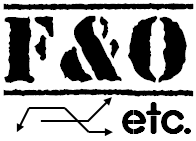|
|
The maximum loss or Risk which one can suffer in the Long Call Position is the amount of premium paid for buying the Long Call Option Position i.e. the price of Long Call Option. In the example we are discussing, we paid $2 to buy the Long Call Option Position. Hence we will loose entire $2 in case the Underlying price ends below the Strike Price.
Maximum Loss/Risks & Maximum Profit/Returns on Trading Long Call Options Position

To be more practical, the buyer of Long Call Option Position will be at loss till underlying stays below the (Strike Price + Premium Paid). In our example, Strike Price is $50 and Premium Paid is $2, so as long as underlying closes below $52, the buyer will be at loss.

Now, include the brokerage commission of the Option Broker, and other charges like stamp duty, etc. say it is another $2, then the break even point raises to $54.
So the total expense to you is $2 (for Call Premium) + $2 (for Brokerage + Stamp Duty, etc.) = $4.
Moreover, options are traded in lots. So if the lot is of 100, then total you will loose will be $4 * 100 = $400. Hence, you stand to loose your entire money $400, in case the underlying settles below $54 on the expiry date.
So dont just assume that you have limited loss - the limited loss actually means a 100% loss, i.e. all the amount that you used to buy call option has gone bust, you will not get a single penny if the price of the underlying stays below the breakeven point.
However, one benefit is that the Maximum Loss or Maximum Risk is capped - i.e. it is known in advance and cannot exceed this given amount of $400. This is important as a options trader needs to manage his capital effectively, and having an information on the maximum loss allows them to manage the capital effectively.
What is the Maximum Profit or Return while trading a Long Call Position?
The Maximum Profit or Return while trading a Long Call Position is UNLIMITED - or theoritically, infinite. Imagine this situation - when you bought the call option, at that time the underlying might be at $50. However, by the time of expiry of the option, the underlying price started shooting up and reaches, say $150. So on expiry, you will receive $100 (i.e. current underlying price $150 minus the strike price $50)
If the underlying shoots up to $300, you will receive $250.
If the underlying shoots up to $400, you will receive $350 and so on
So as you can see, the profit potential is enormous - at least theoretically. Practially, how many undelryings (stocks or indices) do you see making such huge price movements?
Also remember to deduct the price you paid for buying the option - to calculate the correct profit.
You paid $2 for buying the option and another $2 went into option brokerage commission and stamp duty, etc. Total expense is $4. So if you are getting $100 at expiry, then your net profit is $96 only.
So theoretically, it is unlimited profit, but practically, it depends upon your cost and expense and the price movements of the underlying

0 Comments: Post your Comments
Wish you all profitable derivatives trading and investing activities with safety! = = Post a Comment